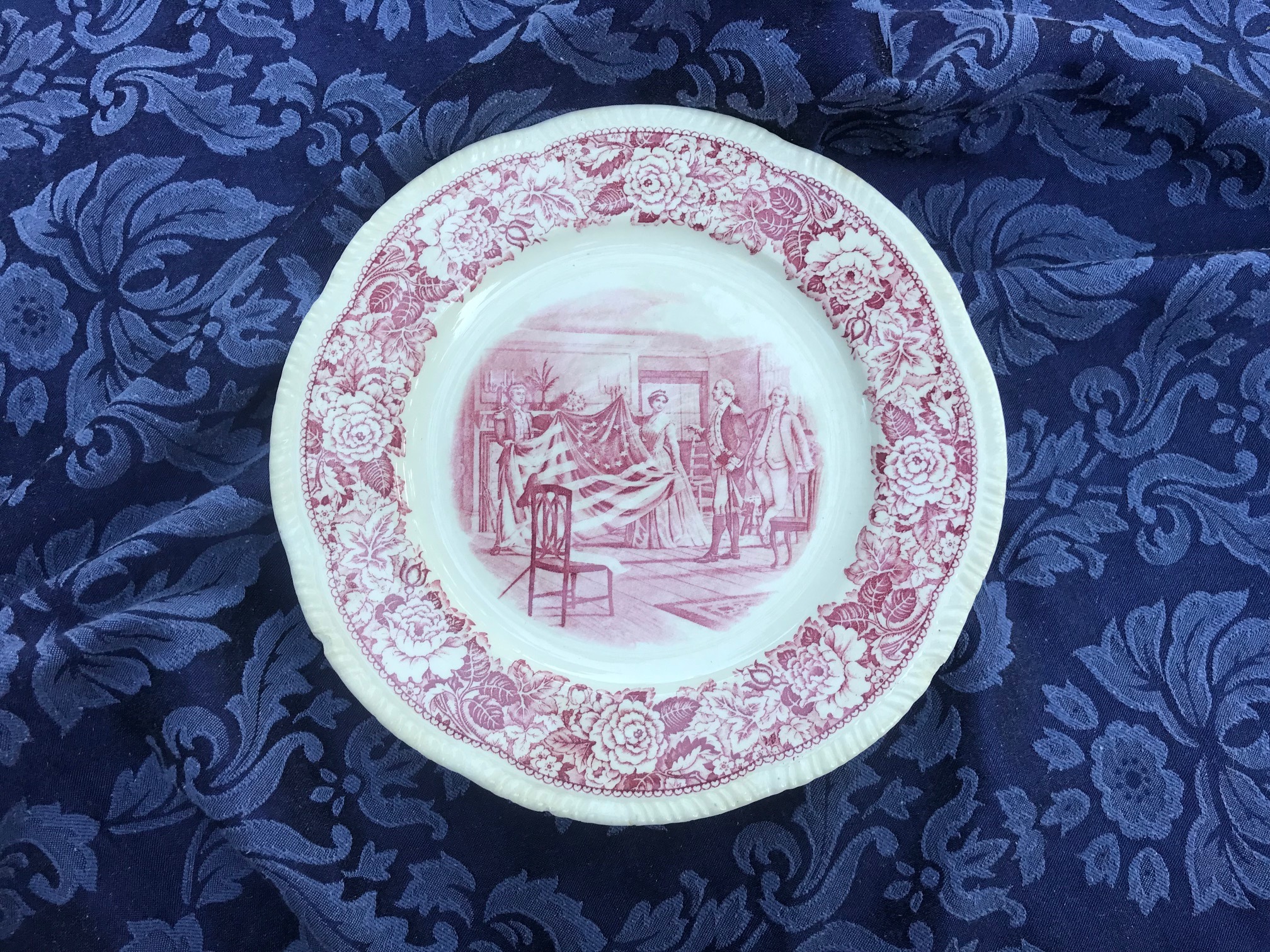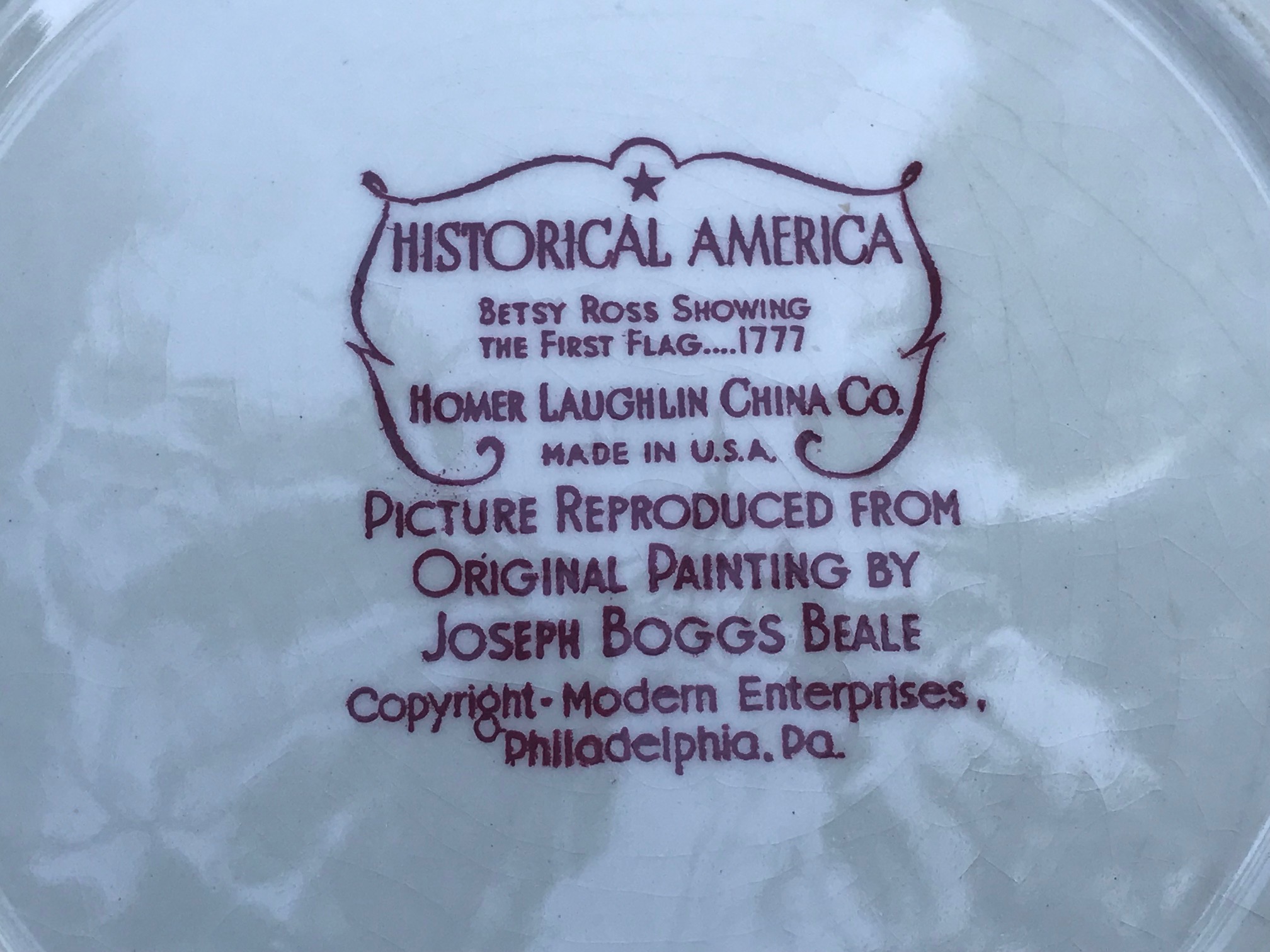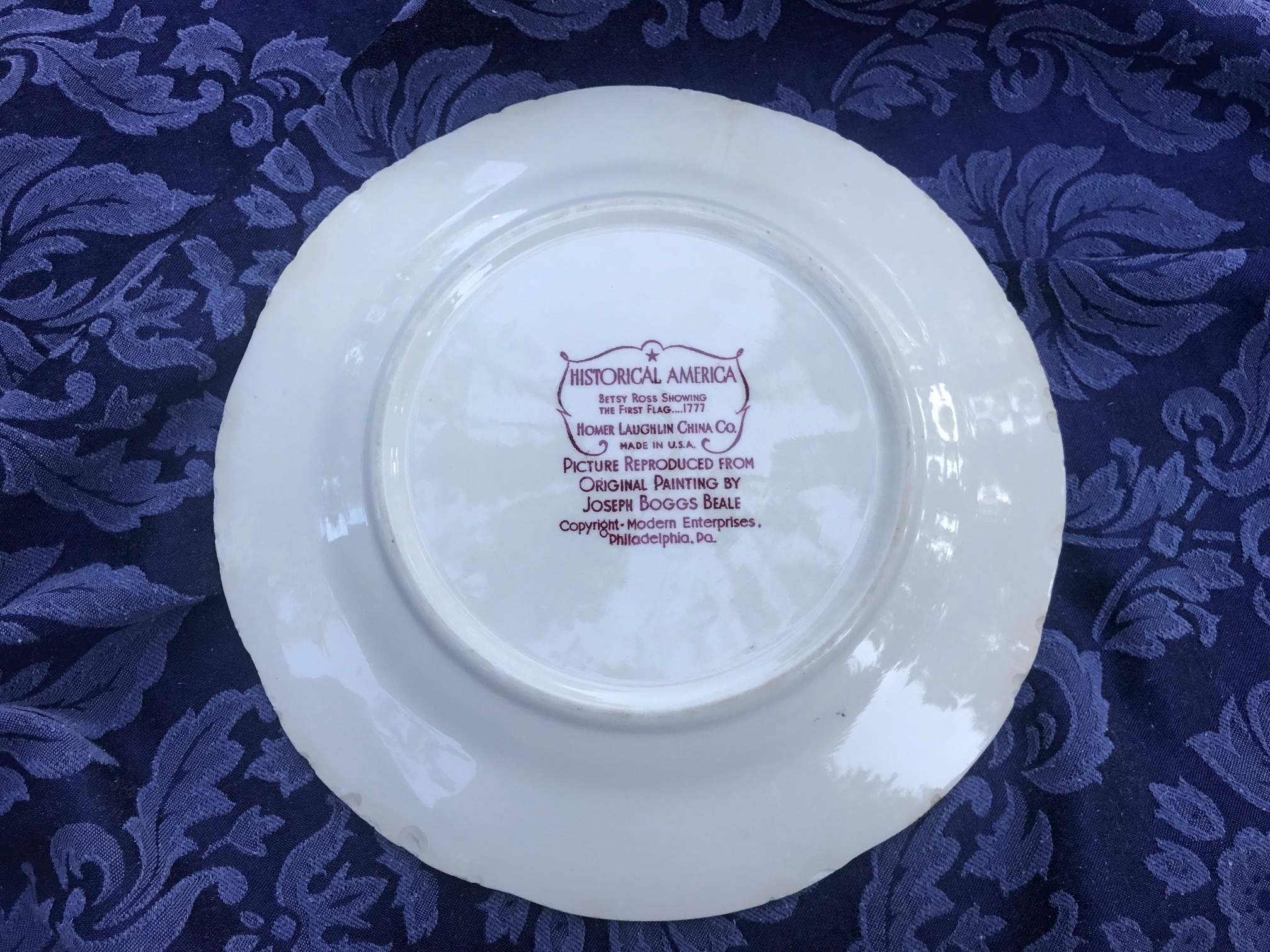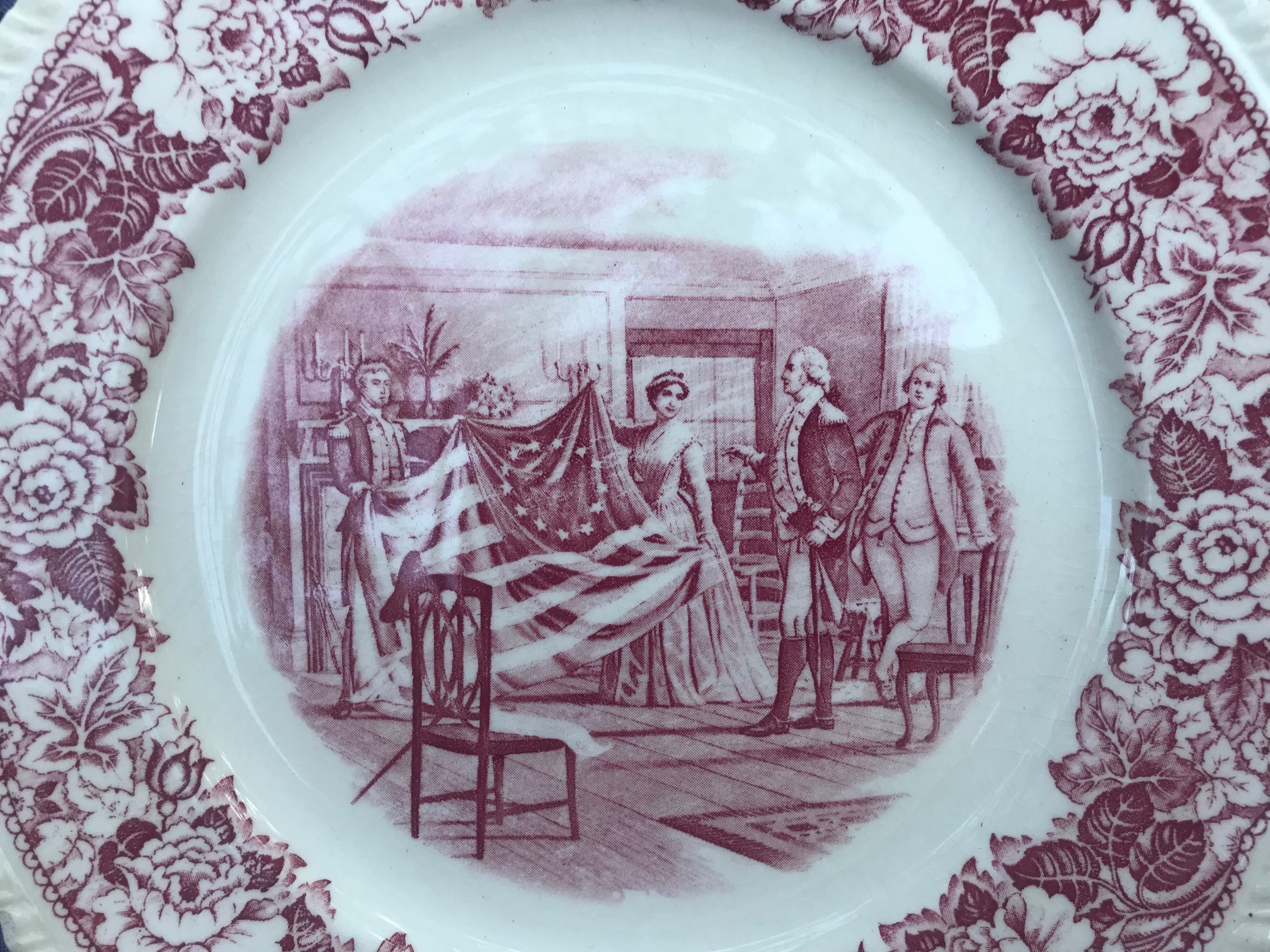Vintage “Historical America Betsy Ross Showing The First Flag” Dish by Homer Laughlin: 57,200 ppm Lead [90 is unsafe]
This plate was purchased at an antique store in Oregon in 2018. The text on the back is as follows:
Historical America
Betsy Ross Showing the First Flag…1777
Homer Laughlin China Co.
Made in USA
Picture Reproduced From
Original Painting By
Joseph Boggs Beale
Copyright – Modern Enterprises,
Philadelphia, Pa.
Continue reading below the image.
When tested with an XRF instrument this dish was positive for the following elements at the noted levels (in parts per million):
Food surface of the dish:
- Lead (Pb): 55,400 +/ 1,400 ppm
- Tin (Sn): 2,243 +/- 104 ppm
- Iron (Fe): 574 +/- 154 ppm
- Titanium (Ti): 192 +/- 50 ppm
Elements not detected by the XRF in “Consumer Goods” mode are not listed. All tests conducted were done for at least one minute (60-seconds) results are science-based and replicable.
Plain white elements of the dish (flat component of the back side tested):
- Lead (Pb): 57,200 +/ 1,600 ppm
- Iron (Fe): 607 +/- 178 ppm
- Titanium (Ti): 230 +/- 55 ppm
The amount of lead that is considered toxic in a newly manufactured item intended for use by children is anything 90 ppm lead or higher in the paint, glaze or coating or anything 100 ppm lead or higher in the substrate (per the Consumer Product Safety Improvement Act). As a result of the test results shared here I would not consider this dish safe for food-use purposes. If you are going to keep a dish like this in your home I would like to see it displayed in a shadow box behind glass (exhibited as a piece of art and not used as a plate.)
Vintage Homer Laughlin/ Fiestaware pieces tend to all be VERY high lead. New pieces from this company that are marked “lead-free” on the bottom are either negative for lead (ND/ non-detect) or very low Lead (generally under 100 ppm) when tested with an XRF instrument.
There is no regulatory standard for lead for dishes when tested with an XRF instrument. Standards like “Prop 65” compliance or “leach testing” do not have minimum or maximum safety limits for how much lead can legally be in a modern dish (or vintage dish for that matter) when tested with an XRF instrument. The XRF generally tests the amount of lead (total lead content) in the top layers of the item it tests, so in the case of dishware XRF readings are generally reflective of how much lead is likely in the glaze.
Thank you for reading!
As always, let me know if you have any questions. If you would like to help support my independent consumer goods testing and lead poisoning prevention advocacy work – please click here for all the ways you can help!
Tamara Rubin
#LeadSafeMama
*Links may be Amazon affiliate links. If you purchase something after clicking on one of my links I may receive a small percentage of what you spend at no extra cost to you.



Never Miss an Important Article Again!
Join our Email List







Would like to have more pieces of this set. My mother had the entire collection. I have only one plate
I have 4 of these plus 4 of liberty bell saucers 4with horses and 4 other ones forgot what is on them but can send pictures
I’m trying to determine if there is lead in my Homer Laughlin Eggshell Nautilus Tulip pattern dishes, circo 1950.
Thanks